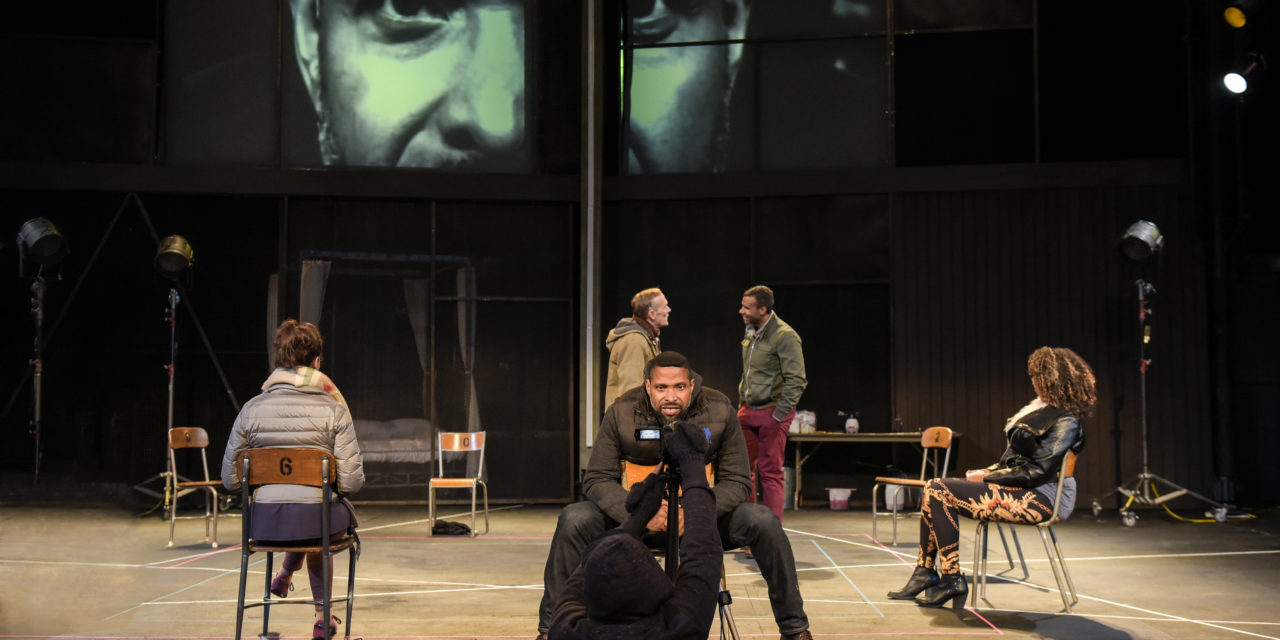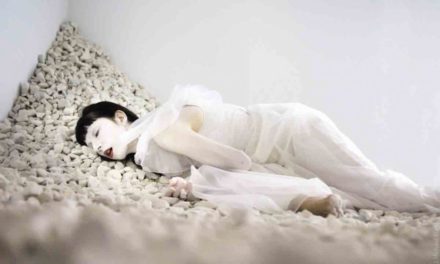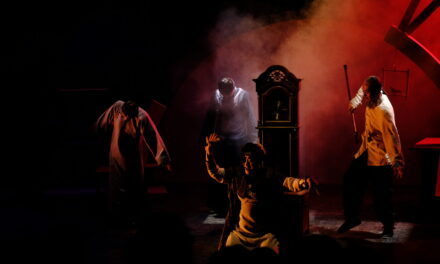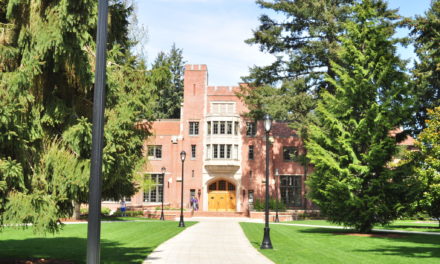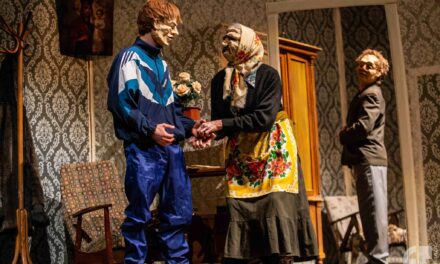When describing the role of a dramaturg Dr. Philippa Kelly says this: “I see a dramaturg’s shadow as flitting constantly, Ariel-like, in the process of creation” and it could not be a more fitting way to describe her extensive career as an author, instructor, and dramaturg.
Since encountering Shakespeare at age fourteen, she’s become the first woman in history to prepare a public edition of King Lear and has published several books, including three on King Lear, the most recent being The King and I.
She’s also educated students and audiences about Shakespeare in schools, prisons, and at the California Shakespeare Theater. As an Australian-American she has a unique perspective on how identity, social justice, and dramaturgy can be woven together throughout the creative process of theatre-making.
What follows is a discussion outlined by her career as a dramaturg, her relationship with Shakespeare’s works, and the intersection of dramaturgy and social justice.
On Dramaturgy
How do you define dramaturgy?
I feel that the core of dramaturgy lies in four questions: why this production, in this place, at this time, for this audience? As for the dramaturgy I practice in my daily activities, it spans everything from editing and cutting scripts (I do this with directors both on the phone and in person, wherever is most convenient for us both), to brainstorming the director’s concept and what the opportunities and pitfalls might be in production; to preparing actor-packets; to delivering pre-show talks and moderating post-show discussions. Whatever can make a production deeper and richer and more ambiguous and interpretively challenging – that is the goal of my activities.
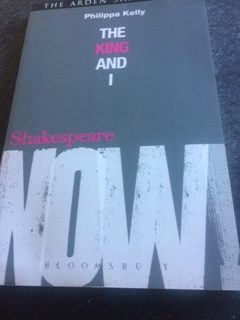
The King And I, Arden press, 2011
I see a dramaturg’s shadow as flitting constantly, Ariel-like, in the process of creation. Preparer of script, context,d embody the vision of an emerging new work: this is the dramaturg. At times we require of ourselves an almost impossible athleticism, as we seek to respond, to delve, to challenge, and to balance different voices from both the front and back of stage.
Are there any questions you find yourself always asking of a play or project?
Yes. Why does this matter? Who does it matter to? How can I make it matter in ways that might not be immediately apparent? These are the questions that I address with the theater appreciation group I lead, Berkeley Theater Explorations. This group goes to a variety of different productions all over Berkeley and San Francisco, and we interview guest artists and also dedicate post-show sessions to exploring the dramaturgy of every show.
What forms of audience enrichment do you typically create?
I always think of audience enrichment as the greatest privilege. To think that people would arrive at the theater early, or stay late, to know more and feel more and check in with others about their insights and opinions – this is a wonderful thing. So I prepare a great deal for every audience enrichment event, even if I don’t end up using all that I’ve prepared. I’ll “learn” the fundamentals of my pre-show talk, so that I can extemporize easily when I actually deliver it. I write blog posts, working over several drafts till I have a post that feels “authentically” casual and real. I have a blog page Cal Shakes set up for me called Ask Philippa! This blog page accompanies every single production, and audience members can write in at any hour of the day or night and I’ll answer them within 24 hours.
Do you have any advice for aspiring dramaturgs?
One of the greatest forces in my professional life has been English theater historian, Elizabeth Schafer. Her mind is original and rigorous and wry, and she looks at everything freshly and takes nothing for granted. So, find a mentor like this. They don’t have to be older – Elizabeth is my own age. Treasure relationships that push your thinking into unexplored territory – director Joel Sass first taught me the full meaning of this. Then my advice would be: consider that you are always learning; don’t be afraid to be generous. Don’t hold onto things where someone else may go deeper and display more knowledge – invite them in, and your own work will be better. Be fearless, but be scrupulous. Always second-guess yourself (without getting paranoid), because the advice you give on a production will go out to a whole range of people who trust you and depend on you.
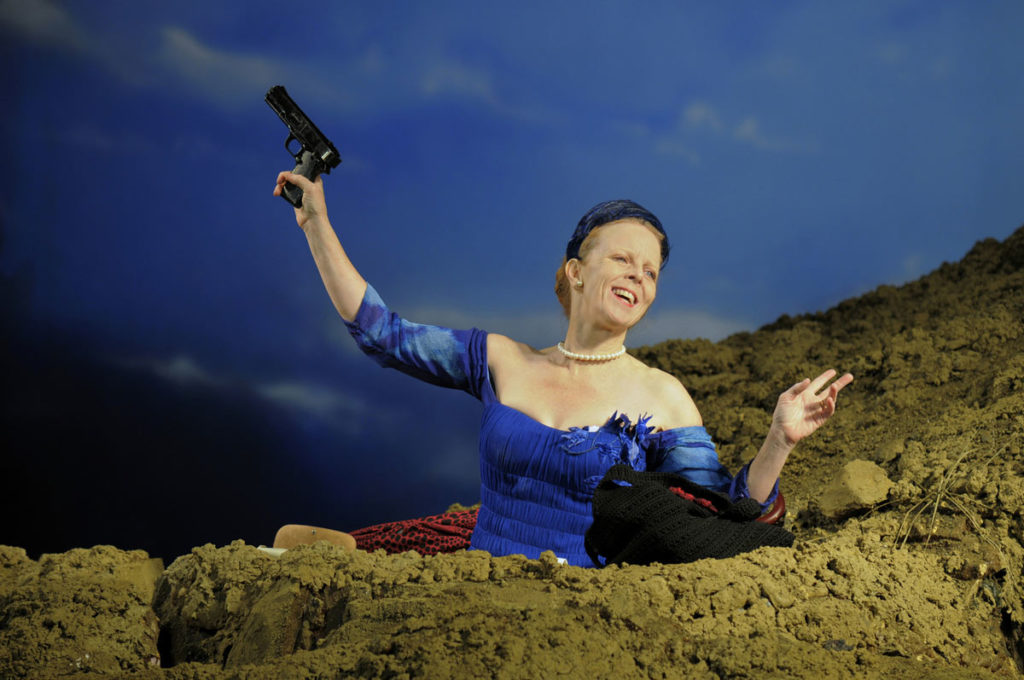
Happy Days. California Shakespeare Theater, 2009. Dir. Jonathan Moscone, starring Patty Gallagher as Winnie. Photo: Kevin Byrne. Courtesy of California Shakespeare Theater.
On Shakespeare
When were you first drawn to Shakespeare’s work? How has that flourished over your career?
I was first drawn to Shakespeare at the age of fourteen, inspired by King Lear. I had a teacher who posed the big questions- What is love? What does it mean to be “new-adopted to our hate?” What are the fallacies inherent in notions of punishment and reward?– and he embedded these questions within textual detail that you could hold onto, tug and wrestle with.
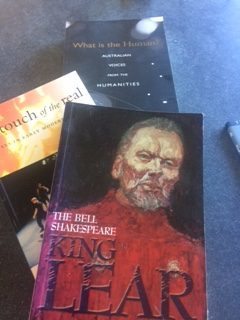
The Bell Shakespeare King Lear, Halstead Press, 2003
You are the first woman in history to prepare a public edition of King Lear. What does this mean exactly?
There had been a woman called Jacky Bratton who’d done a superb actors’ edition of the play – an amazing project where she would annotate almost every line with descriptions of how actors had attacked or addressed (interpreted) the line. My edition was for the general public – not people concerned with acting minutiae, but a “regular” edition that had glosses for every line, an introduction, and textual apparatus (list of quarto and folio passages, etc). No woman in history had yet been given the opportunity to prepare such an edition, and I’m forever grateful to Australia’s Bell Shakespeare Company for commissioning me. I only found out after I’d done the edition (when a reviewer pointed out that no woman had ever prepared a public edition before) that mine was the first.
Could you tell me more about your book, The King and I? What was your impetus for writing this book? What are the hopes for its readers?
The King and I is part of a series created by two dynamic Shakespeare scholars – Simon Palfrey at Oxford University and Ewan Fernie at the Shakespeare Institute. Their goal was to create the series of books on Shakespeare that are deeply informed by scholarship and liberated from the tyranny of footnotes. I was thrilled to think of such a novel bridge between scholarship and the world. The King and I interweaves my personal experiences with some of the public discourses that have been cultivated by Australians: political ruptures, institutional oddities, cultural folklore, humorous skits, and performances both conservative and iconoclastic, all of which can be linked in vital ways to King Lear. My aim in writing the book was not merely to paint a Lear-colored landscape of Australian history, nor even to refashion the gold-fringed land down-under as a blasted heath. I wanted to reveal aspects of the past that we might be surprised to find, or that we might too casually have forgotten. These things are past but not gone; the traces linger. So in a sense King Lear is my dramatic touchstone, helping me to call up voices from the past, including its own.
On Dramaturgy and Social Justice
How does your Australian background come into play when working on projects elsewhere?
I don’t think of my Australianness as a single or a static thing, or as an identity that’s finally understood or firmly in the past. Like many Australians, I was born elsewhere, I was a childhood immigrant from England, and, many years later, an adult emigrant to America. If I had to think of “Australian” identity as one thing, I’d think of it as a kind of furniture of the mind – it’s the force by which I’ve come to orient myself and my memory, my feeling of continuity and of difference, my sense of humor. It’s that feeling – of being both inside and outside – that is, I think, most valuable for me as a dramaturg.
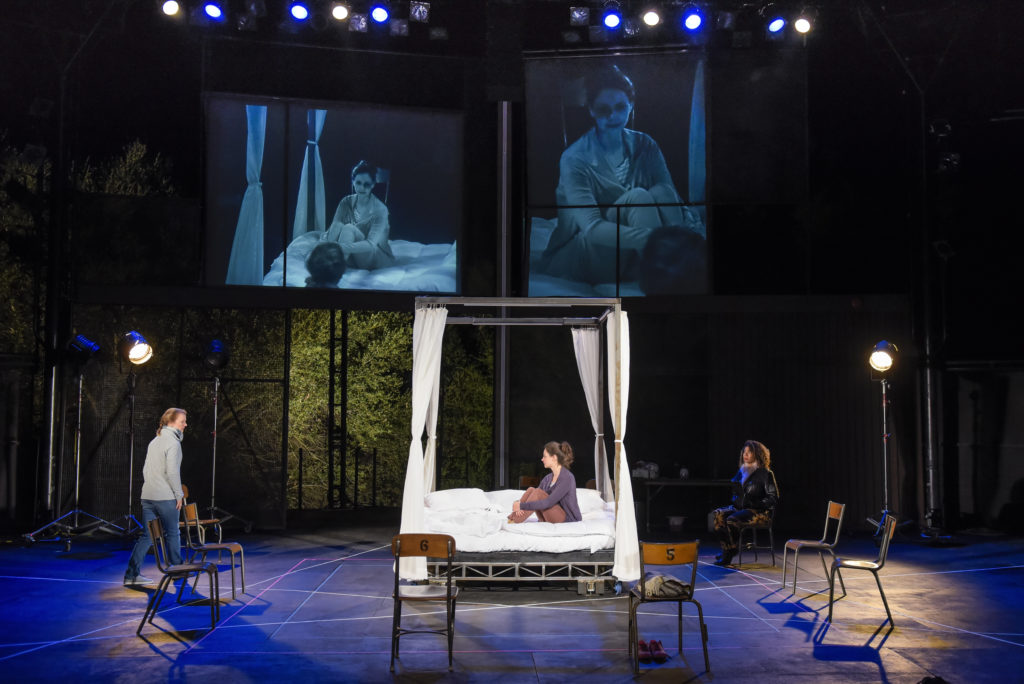
Othello. California Shakespeare Theater, 2016. Directed by Eric Ting. Photo: Kevin Byrne. Courtesy of California Shakespeare Theater.
Where is the intersection between social justice and dramaturgy for you?
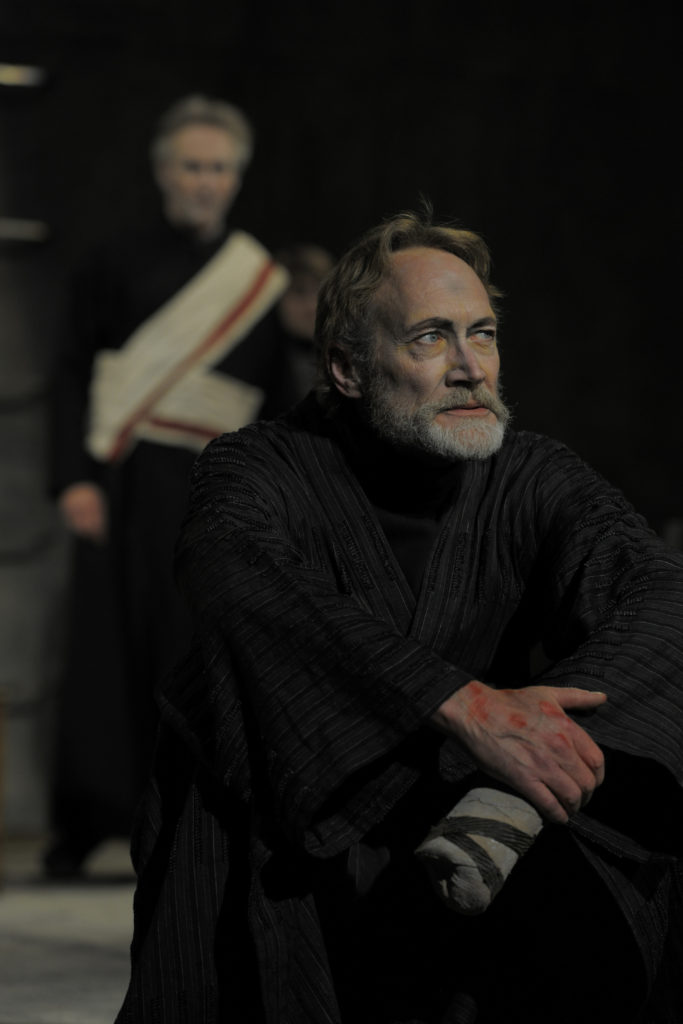
Titus Andronicus. Directed by Joel Sass for California Shakespeare Theater. Photo: Kevin Byrne. Courtesy of California Shakespeare Theater.
I think of empathy as fundamental to any experience of art, and also fundamental to the workings of social justice in the arts. I see it as the capacity more fully to understand the self by more deeply understanding what is “seen/heard/experienced” on stage. Because of the recent history of terrorism, many Americans have come to be dismissive or suspicious of almost anything of Middle Eastern origin. When we experience the artists who are working from and within a culture about which people might be puzzled/suspicious/prejudiced, that prejudice is thrown into direct conflict with what we have experienced with our eyes, ears and hearts on-stage. This makes us far more aware of, and emotionally prepared to confront, our own prejudice – and I think this is the core of social justice in the arts. I don’t think theater changes minds and hearts when it is didactic. I think the really powerful and life-changing theater comes from a piece that holds “life” up to the light via a prism of ambiguity – that makes you puzzle and question and even perhaps feel outraged. I love Ayad Akhtar’s Disgraced, Martin McDonagh’s The Pillowman – these plays are full of questions, and any answers they suggest will change and get more complicated on reflection. I had an extraordinary experience at the recent production of Pinter’s The Birthday Party at the American Conservatory Theater. The sense of menace, mystery, sliced through with Pinter’s incredible situation wryness. Cal Shakes had a provocative piece in 2016, the first production (it was Othello) that our new Artistic Director, Eric Ting, directed. It had features – like extemporary attacks on white racism that were reverse mirrors of “conventional” racism – that really got audience members spinning the full gamut from outrage to enthusiasm. My 24-hour response policy on the “Ask Philippa” page had me up till 2 a.m. many nights!
How do you situate your work in an area of privilege in relationship to social justice missions?
Somerset Maugham once said that no one has so much money that they feel they have enough. Every one of us in America (or Australia) is, in a sense, privileged in comparison to other parts of the world. If we can get audiences in touch with the idea of privilege as something we all share, in ways we might not have acknowledged or understood, then I think change – in ourselves, in the way we see others – can happen. I do think of it in terms of a Lear metaphor, the idea that philosopher Karen Armstrong once expressed as de-throning ourselves from the center of the universe. Actually, I’ll throw in another Lear-metaphor here – when the old, self-disenfranchised King begins to realize that he’s being judged by what his daughters think he needs, he cries, “Reason not the need!” Our needs, as humans, go beyond reason. Every single human life has needs that transcend reason. If we can truly understand that, we can understand something of what it means to be human.
This post was written by the author in their personal capacity.The opinions expressed in this article are the author’s own and do not reflect the view of The Theatre Times, their staff or collaborators.
This post was written by Taylor L. Ciambra.
The views expressed here belong to the author and do not necessarily reflect our views and opinions.

